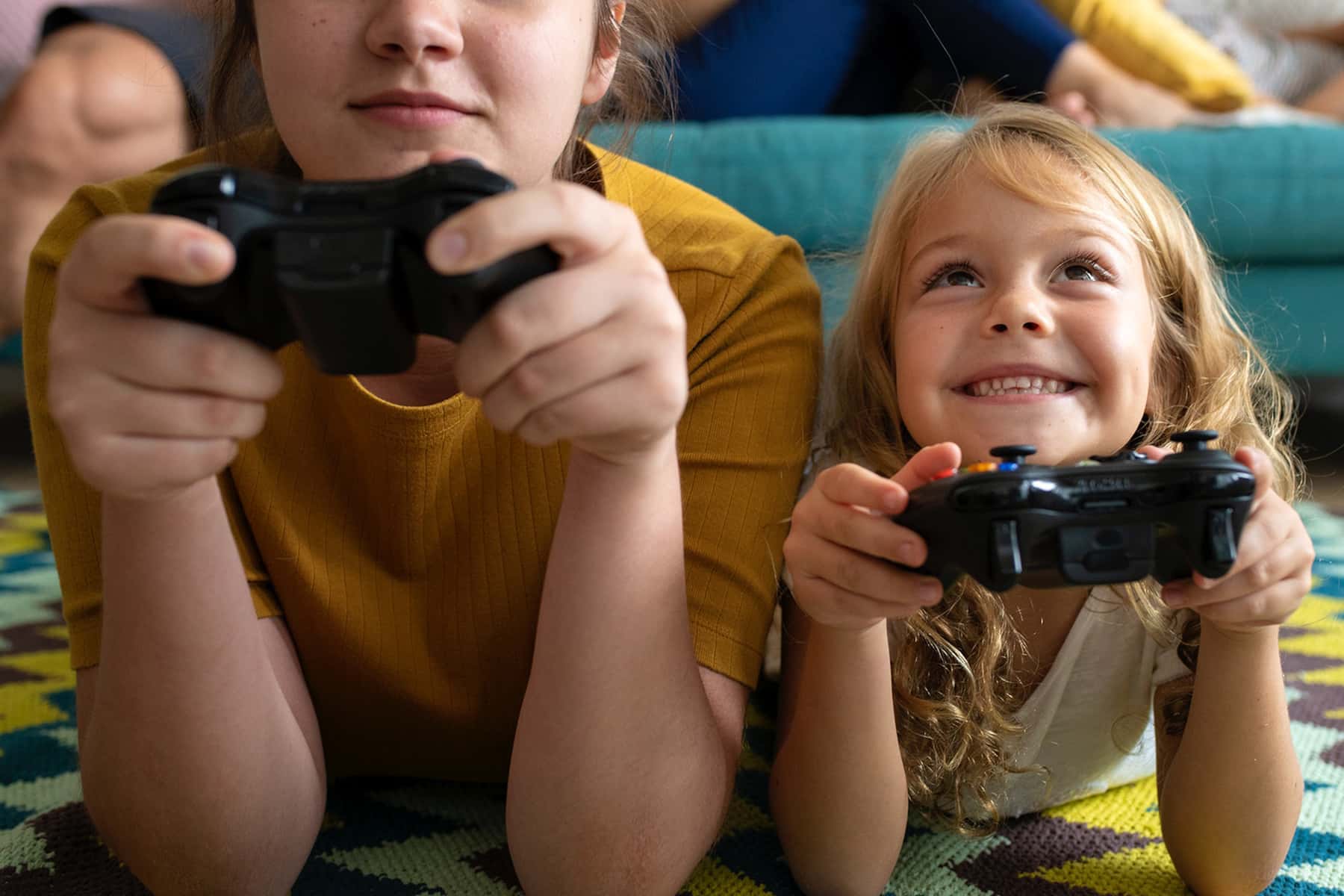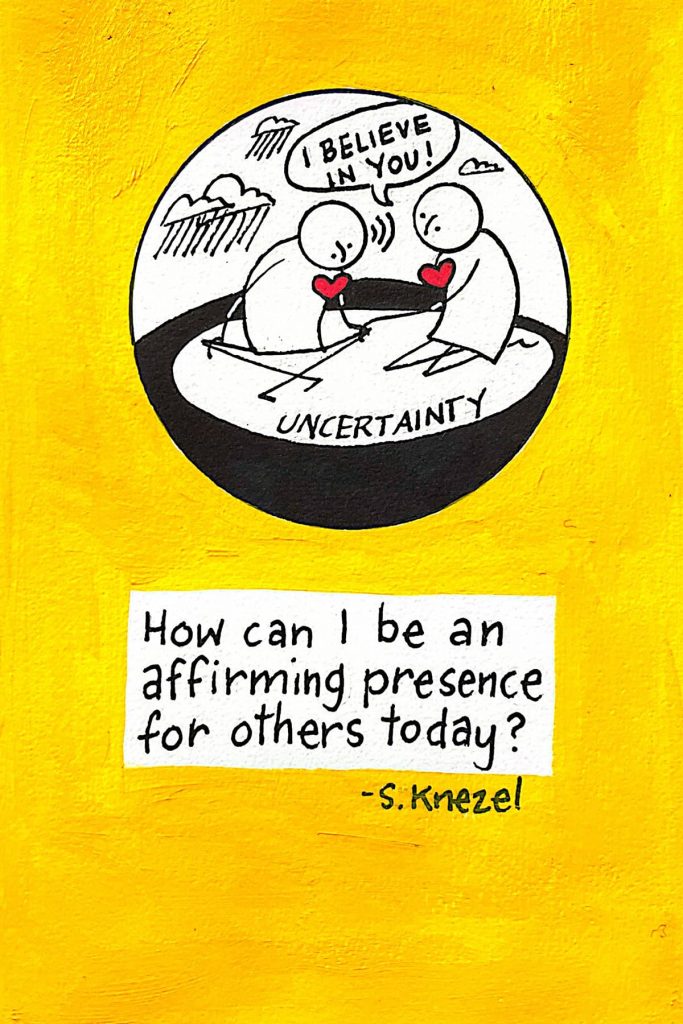
By Bob De Schutter, C. Michael Armstrong Professor of Applied Game Design, Miami University
It is one thing to learn about history in a classroom. But as any visitor to a living museum or historic site can tell you, a fantastic way to learn is to make a personal connection.
In early 2019, media entrepreneur Mati Kochavi and his daughter Maya brought the stories of Eva Heyman, a Hungarian Jew who was murdered in Auschwitz, to social media with the simple question, “What if a girl in the Holocaust had Instagram?” “Eva Stories” was a one-day project told through Instagram stories that amassed 200,000 followers before the morning it began and reached 1 million by its end the next day.
Regular people care about the past, and can now engage with it in new ways. As a researcher of games and aging, I’m noticing a trend emerging that has the potential to build even more powerful emotional connections with its audience, through the crackling voices of people who lived through important historical times and events. My fellow game designers and I refer to it as “gaminiscing” – using the tools of video games to share personal history.
These projects, including my own, combine audio recordings of their subjects with modern gameplay, letting players explore a virtual environment to hear – and sometimes even experience – meaningful life stories that are told to them by the older adults who lived through them.
Connecting generations
In general, few video games portray older characters accurately. Often they’re presented as a cartoon, or an over-the-top caricature or in a dehumanizing way. Before gaminiscing, there was almost no opportunity for older people to use their own voices to tell authentic, personal stories.
“Grandma Game” is the working title of an intergenerational game by brothers and media artists James and Joe Cox, in collaboration with their grandmother, Barbara. The game is a walking simulator, a popular genre of video games in which players trigger stories by exploring 3D environments. In “Grandma Game,” players find themselves inside the watercolor paintings done by Barbara and her grandsons, while hearing her tell stories of what the images and places mean to her.
The game intentionally limits a player’s interaction, to make it more fun for Barbara herself to play it. “We want the game to be playable (and enjoyable) to her, so we have to design the controls and play around what she can understand and handle,” James told me in an email. “She sees it as a way to preserve her family’s history and as an opportunity to share skills with, and learn from, her grandchildren. Both our watercolor painting sessions and audio recording sessions have given us the chance to spend quality time with our grandmother – time focused on creating work together as artists.”
Looking at history
Other games have emerged that take on more expansive historical topics, though still using very personal experiences. “Memories of Manzanar and Tule Lake” is the working title of a game aiming to recreate the stories of the game designer’s Japanese American grandparents during their time in an internment camp following the bombing of Pearl Harbor. In the game, players will be able to direct their own journey, interacting with other internees and learning about personal experiences with pivotal events in history, like the infamous loyalty questionnaire, and joining the U.S. Army.
Similar to the Cox brothers, game designer Brent Shiohama wishes to honor his grandparents, the bravery of interned families, and the Japanese Americans who served in the 100th Infantry Battalion/442nd Infantry Regimental Combat Team.
“La Peur Bleue” tells the stories of the creator’s grandfather in World War II France. The artist states, “By focusing on specific, emotional moments from my grandfather’s past, you are given the opportunity to experience the context of the war and empathize with the emotions my grandfather felt.” Players interact with objects in recreated locations and hear a grandfather reminisce about his past, adding another layer of historical immersion by using virtual reality rather than just a computer screen.
My own game, the forthcoming “Brukel,” uses recordings of my grandmother’s own voice, to tell stories of her childhood growing up on an occupied farm in Belgium during World War II. As the player, you enter the Brukel farmhouse equipped with your smartphone camera and a vague list of topics that your grandmother told you about. By photographing items that match well with each topic, you unlock audio recordings in which she reveals her past to you.
However, when it eventually gets dark, you find yourself trapped in the house as the ghosts of the past come to life. Through a series of survival-based vignettes, you must try to outlast some of the horror stories that my grandmother lived through as a teenage girl, while slowly learning about how the war deeply affected everyone in the family.
A welcoming response
Even before the release of “Brukel,” I have been able to showcase it, most notably at an event at the Smithsonian American Art Museum in early August 2019. So far, playtesters have told me they appreciate its ability to engage the player through the use of modern technology.
Because of my own research, I had anticipated that older gamers would appreciate “Brukel” for its meaningful engagement and mature story. Those are two qualities that my research has shown are paramount to older gamers. In particular, for my qualitative work, I met a number of older adults who deliberately sought out games that would meaningfully contribute to their interest in the post-World War II era.
For example, an 82-year-old Belgian man told me, “I barely remember the Second World War but I was a child back then. What I remember is extremely vivid, though. The lights, the bombings, the noise. Airplanes flying over our house and being shot down. I can still see it. It was an adventure, and I relive that adventure by playing games about it.”
Similarly, another Belgian man, aged 62, explained, “I recently went to Normandy; it is amazing to visit places in games that you can later on visit in real life. You have never been there but you know the place from the game. They can be so realistic.”
However, I had not expected the response that “Brukel” received from children. At the Smithsonian event, people from all age groups – including pre-kindergartners and octogenarians – played “Brukel.” As a group, pre-teens turned out to be most engaged with the game, spending the most time playing it and even returning multiple times over the two-day event to play it again.
When I spoke with the parents of these young gamers, the general theme of their response was that they loved how engaged their children were with “Brukel” while learning about history. One parent told me, “They’re going to play video games regardless, so it’s great that they’re drawn to something educational.” Another parent who said his child was on the autism spectrum and had trouble concentrating in school praised “Brukel” for its ability to engage with his son. He said his son was more comfortable learning through playing the game because he was familiar with using a keyboard and mouse, which he found far less stressful than being in a classroom.
I do not think it is a coincidence that many of these gaminiscing projects are centered around war. The 75th anniversary of the end of World War II will be in 2020; as those who faced its terrors firsthand die, the stories of their experiences are fading away. The risk – and my concern – is that society collectively will forget the lessons and the promises of “never again.”
Originally published on The Conversation as Video games can bring older family members’ personal history back to life
Support evidence-based journalism with a tax-deductible donation today, make a contribution to The Conversation.


















